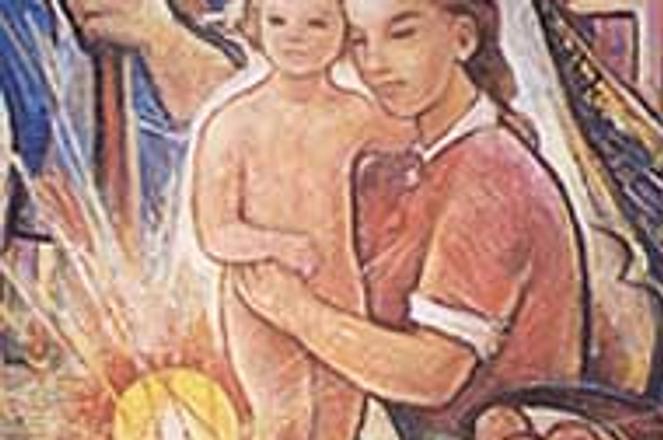Slnko Socializmu is one of 14 paintings currently on display.photo: Courtesy Galéria Linea
Socialist Realism Paintings
Where: Galéria Linea. Drieňová 34
Cost: Admission free
When: Mon-Fri, 7:00 - 17:00, Exhibition runs till June 30
Rating: 5 out of 10
In 1996 the Slovak Collection of Visual Arts began selling pieces from the country's socialist era. The art of the period was characterised mainly by state-imposed themes such as the struggle of the proletariat, the celebration of work and workers, and the pleasantness of life under socialism; artists were expected to adhere to classical forms and to obey the imperative that art be easily understood by everyone.
A small exhibition of this work, entitled Zaujímavé obrazy socialistického realizmu (Interesting Paintings of Socialist Realism) is now on display at Galéria Linea,in the Bratislava suburb of Ružinov.
The 'gallery' is really just a room with a few tables and a cheap buffet on the bottom floor of an office building. Yet, while businessmen sit stolidly eating soggy french fries and boiled hot dogs, a thought-provoking compendium of Slovakia's socialist artistic history sits inconspicuously on display for anyone interested in the culture of that era.
Part art, part history, the exhibition's 14 mostly unremarkable paintings (several of which are just plain awful) represent a stark image of the relation between man, machine, and planet. Scenes of tractors in a country landscape, or of workers going to market, are so simple as to be completely without passion, as if by living in harmony with his environment, man had been reduced to an unthinking and unfeeling cog in a scheme he neither cared for nor understood.
Part of the fun with work from this era is trying to guess the two tales told by every painting - what the artist was ostensibly portraying and what were his true motivations. The exhibition's highlight - a colourful abstract painting of a family centred around a sun entitled Slnko Socializmu (The Sun of Socialism) - appears to be an unequivocal testament to the virtues of socialism. However, a closer look reveals not a trace of joy on the family's faces. Was the artist 'sneaking in' a criticism of life under socialism, or is it simply all too easy for an outsider to speculate in retrospect?
The ugliest piece of the exhibition is V Lodeniciach (At the Shipyard) by Július Barta. A dour industrial still life of a crane (which achieves a kind of glory in its absolute ugliness), it begs different but equally inscrutable questions: Just how many shades of brown can one painting have? And how could any artist, no matter what the pressure, have sustained such interest in painting a crane?
Successful art poses questions, but you'll need more than a little patience and desire to identify the queries behind the paintings presently hanging on the walls of Galéria Linea.


